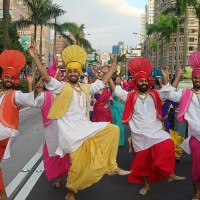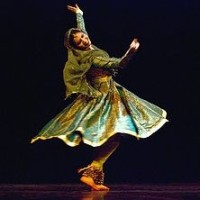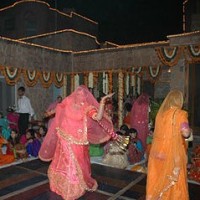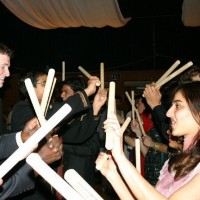DANCES OF INDIA

Bhangra
Bhangra was a folk dance conducted by Punjabis in the central northern areas of the region to celebrate the harvest, and whose general practice had ended by the Partition, 1947. In the 1950s, a new folkloric dance, representative of the state of Punjab and composed of glimpses of men's Punjabi dance styles, was created and eventually received the title of bhangra. First developed in India and attaining a rather standardized form by the 1980s, the folkloric bhangra was exported to other counties by Punjabi emigrants. By the 1990s, a still newer style of dance called bhangra was being staged in the Punjabi Diaspora, often characterized by a fusion with Western dance styles and the use of pre-recorded audio mixes. Aside from these specific dance genres, Punjabi dancing in general, especially when done to popular bhangra music, is often casually called "bhangra".

Kathak
Kathak is one of the eight forms of Indian classical dances, originated from India. This dance form traces its origins to the nomadic bards of ancient northern India, known as Kathakars or storytellers. Its form today contains traces of temple and ritual dances, and the influence of the bhakti movement. From the 16th century onwards it absorbed certain features of Persian dance and central Asian dance which were imported by the royal courts of the Mughal era.
The name Kathak is derived from the Sanskrit word katha meaning story, and katthaka in Sanskrit means he who tells a story, or to do with stories. The name of the form is properly katthak, with the geminated dental to show a derived form, but this has since simplified to modern-day kathak. kathaa kahe so kathak is a saying many teachers pass on to their pupils, which is generally translated, 's/he who tells a story, is a kathak', but which can also be translated, 'that which tells a story, that is 'Kathak'.

Ghoomar
Ghoomar is a traditional folk dance of Rajasthan, India and southern Asia. Ghoomar was developed by the Bhil tribe and was then adopted by other Rajasthani communities. It is performed by women in swirling robes, and accompanied by men and women singing together.
This folk dance gets its name from "ghoomna", the pirouetting which displays the spectacular colors of the flowing "ghaghara", the long skirt of the Rajasthani women. There is an amazing grace as the skirt flair slowly while the women folk twirl in circles, their faces covered with the help of the veil. Their measured steps and various graceful inclinations of the body, beating palms or snapping fingers at particular cadences while singing some lilting songs. Mostly Goddess Saraswati is worshipped during this dance.

Garba
Garba is a form of dance that originated in the state of Gujarat in India. The name is derived from the Sanskrit term Garbha ("womb") and Deep ("a small earthenware lamp"). Many traditional garbas are performed around a centrally lit lamp, or a picture or statue of the Goddess Shakti. The circular and spiral figures of Garba have similarities to other spiritual dances, such as those of Sufi culture. Traditionally, it is performed during the nine-day Hindu festival Navaratri. Either the lamp (the Garba Deep) or an image of the Goddess Durga (also called Amba) is placed in the middle of concentric rings as an object of veneration.

Dandiya Raas
Raas or Dandiya Raas is the traditional folk dance form of Vrindavan, India, where it is performed depicting scenes of Holi, and lila of Krishna and Radha. Along with Garba, it is the featured dance of Navratri evenings in Western India.
The word "Raas" comes from Sanskrit word "Ras". The origins of Raas can be traced to ancient times. Lord Krishna performed Rasa lila" (Lila means Lord Krishna's playful dance. The word "Lila" also refers to things that God does that we do not fully understand).





